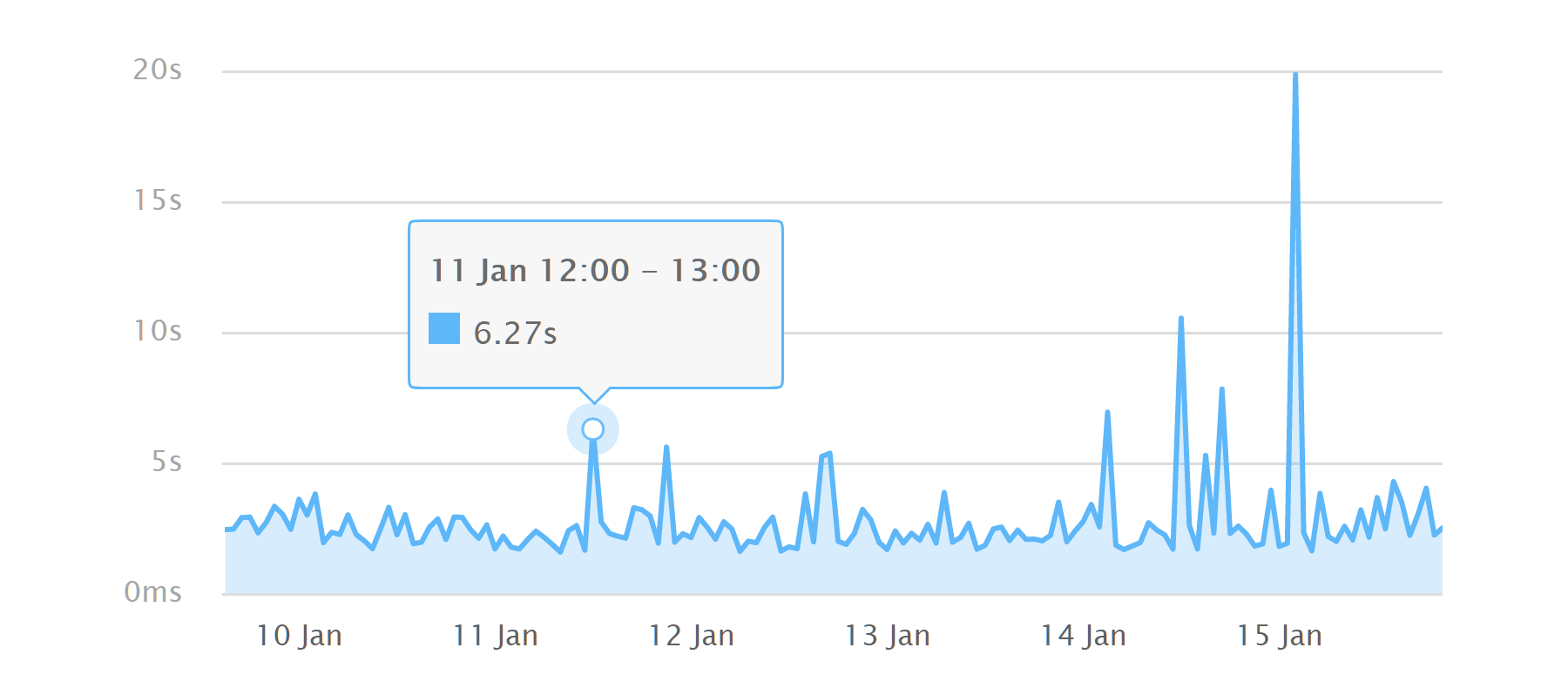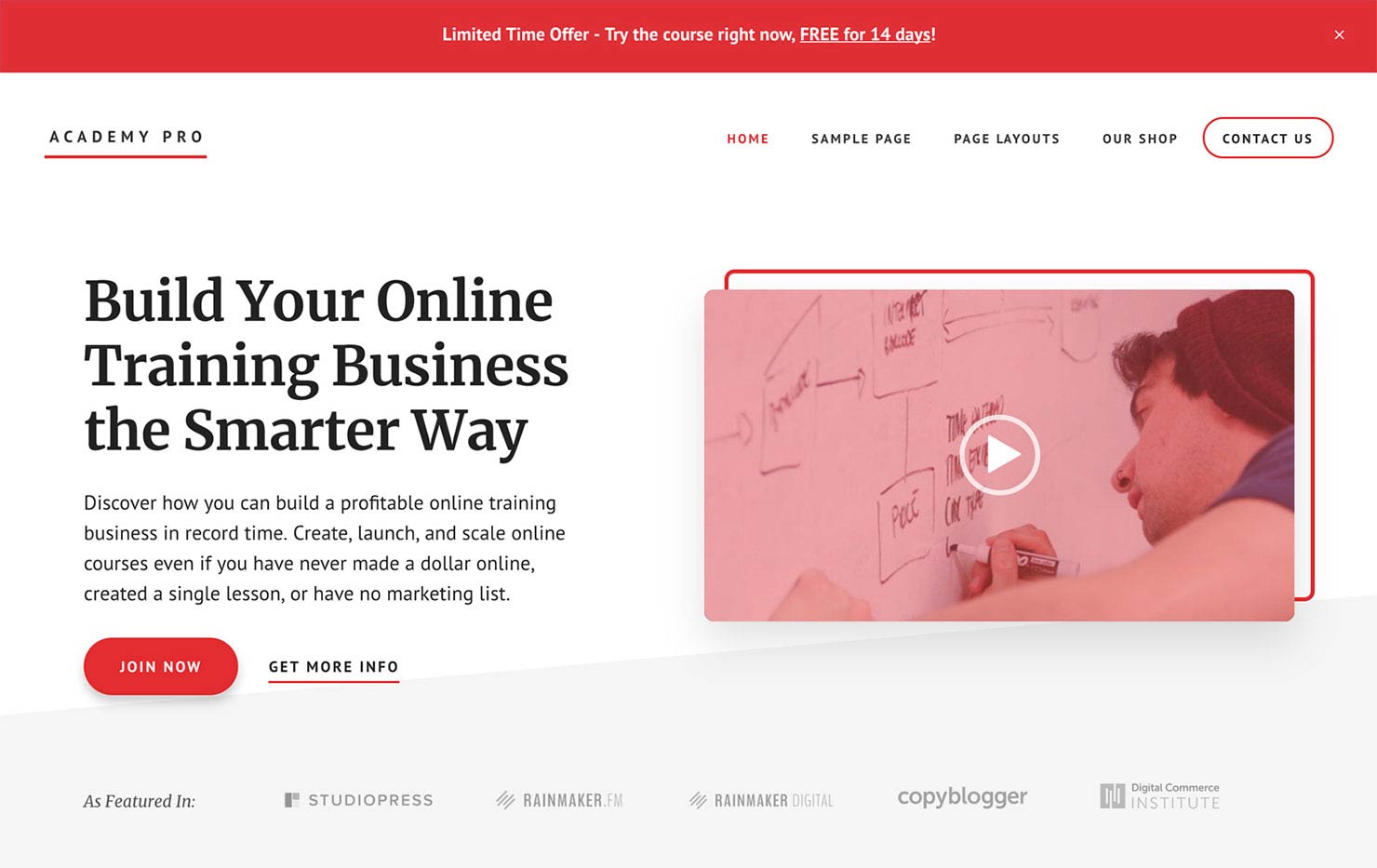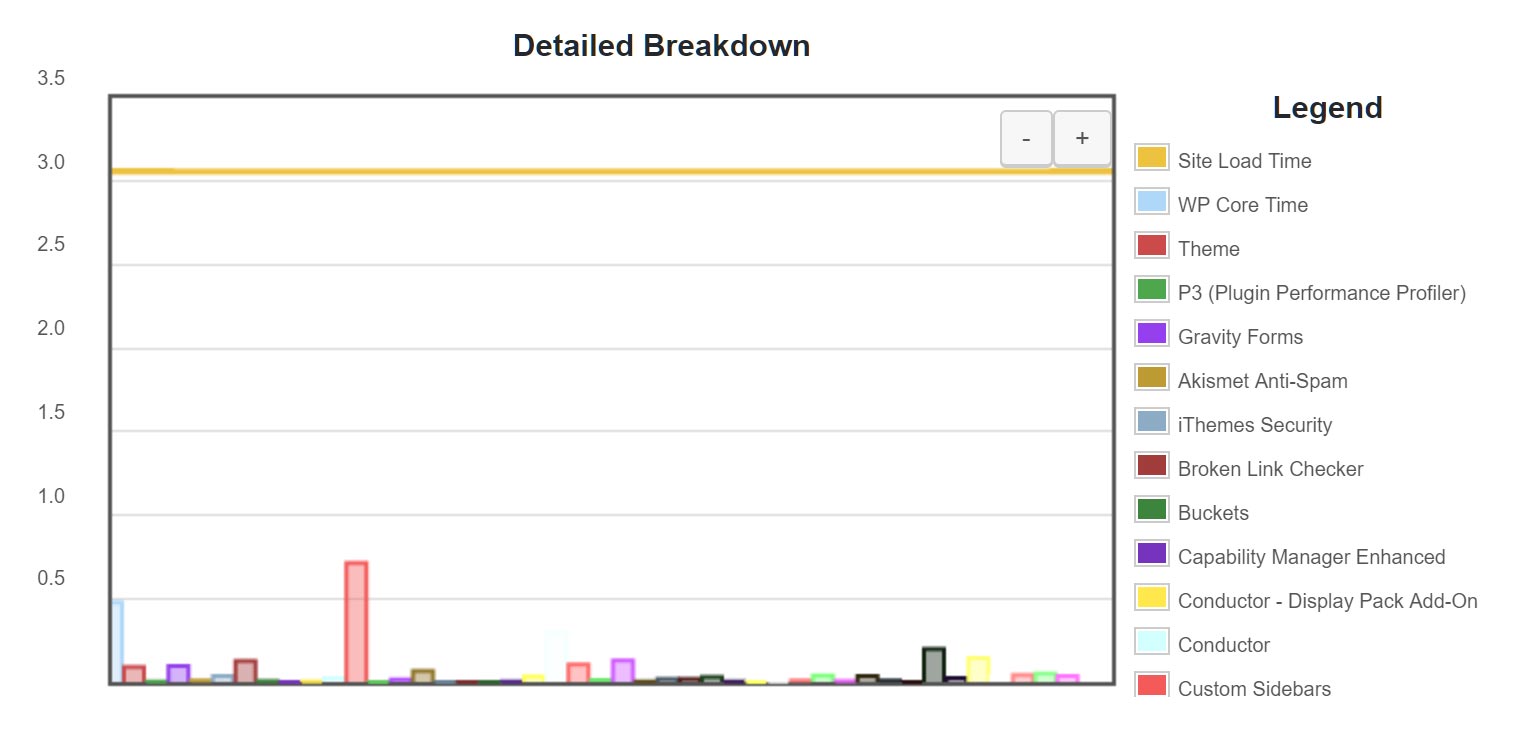Um site de carregamento lento pode causar muitos problemas para seu projeto de associação. Como a velocidade da página tem um impacto direto nas taxas de conversão, nas classificações dos mecanismos de pesquisa e na experiência do usuário, aprender como melhorar a velocidade do seu site de associação é um investimento de tempo que vale a pena.
Felizmente, há muita coisa que você pode fazer com apenas um pouco de esforço para acelerar seu site de associação do WordPress. Muitas das recomendações deste guia são gratuitas, enquanto outras são de baixo custo. Entretanto, você não precisa aplicar todas elas. Até mesmo a implementação de algumas dessas sugestões pode produzir resultados notáveis no que diz respeito ao tempo que os visitantes têm de esperar para acessar o conteúdo.
Portanto, se você quiser fazer tudo o que estiver ao seu alcance para transformar mais de seus visitantes gratuitos em membros pagos, melhorar a otimização do mecanismo de busca do seu sitee manter seus membros atuais satisfeitos, leia nossas principais dicas sobre como aumentar a velocidade do seu site de associação.
Como tornar seu site de associação mais rápido

Antes de iniciar sua missão de melhorar a velocidade do seu site de associação, é altamente recomendável que você faça algumas medições de carga de página de linha de base.
Ferramentas e serviços Freemium como Pingdom e GTMetrix tornam muito fácil descobrir quanto tempo seu site leva para carregar. Lembre-se apenas de fazer algumas medições, testar várias páginas do seu site e registrar os resultados.
Depois de fazer alterações no site, você pode comparar os resultados antes e depois para ver o impacto que elas tiveram nos tempos de carregamento.
Escolha um host rápido

Escolhendo um host da web com foco no fornecimento de tempos de carregamento rápidos é um dos aspectos mais importantes da criação de um site de associação rápido.
Afinal, se você construiu seu site sobre uma base de baixo desempenho, as demais dicas deste guia para melhorar a velocidade do seu site de associação não ajudarão tanto quanto poderiam.
Mesmo que você já tenha lançado seu site de associação, não é tarde demais para trocar de host da Web e mudar para um serviço mais rápido. Os melhores hosts da Web para WordPress facilitam muito a migração do seu site e do conteúdo dele para a plataforma deles.
Se estiver satisfeito com seu provedor de hospedagem atual, provavelmente terá a opção de fazer upgrade para um nível superior sem mudar de empresa. Por exemplo, se estiver inscrito atualmente em um plano de hospedagem compartilhada de nível básico, você terá muitas opções de upgrade disponíveis. Mesmo que esteja no plano de nível superior do seu host atual, vale a pena entrar em contato para ver como eles podem ajudar.
Encontrar o host da Web mais rápido não é fácil, pois a maioria das empresas afirma ser a melhor. Entretanto, comparações imparciais podem ajudá-lo a encontre os planos de hospedagem mais rápidos.
Use um host especializado para arquivos grandes
Se o seu site de associação inclui conteúdo multimídia, como vídeos, provavelmente você deve usar um serviço de hospedagem especializado para armazenar, proteger e fornecer esse conteúdo.
Isso não apenas manterá o acesso ao seu conteúdo de vídeo e áudio restrito apenas aos membros, mas também aliviará parte da carga do seu host da Web e, por sua vez, ajudará a melhorar a velocidade geral do seu site de associação do WordPress.
Isso não se aplica apenas ao conteúdo de vídeo, mas também a alguns dos outros tipos de conteúdo que você cria para seu site de associaçãocomo podcasts, aplicativos, ferramentas e jogos.
Aproveite uma rede de distribuição de conteúdo
O uso de uma CDN ou rede de distribuição de conteúdo é outra maneira de lidar com os arquivos grandes que compõem seu site. Uma boa CDN duplicará e distribuirá automaticamente cópias dos arquivos de seu site para centros de dados em todo o mundo.
Agora, sempre que alguém visitar seu site, estará acessando os arquivos de imagem e vídeo de um servidor mais próximo. A jornada mais curta do servidor CDN até o computador acelerará o tempo de carregamento sem nenhum esforço extra da parte do usuário.
Escolha um tema WordPress de carregamento rápido

Independentemente de você optar por um tema WordPress pronto para uso ou usar um design personalizado, é fundamental escolher uma estrutura de carregamento rápido para seu site de associação.
Como escolher a opção errada hospedagem na webSe você escolher um tema do WordPress com desempenho ruim, poderá realmente prejudicar suas chances de criar um site de associação com carregamento rápido. Além disso, a troca de temas do WordPress em um site estabelecido pode envolver muito mais trabalho do que a migração para um novo host da Web. Portanto, é recomendável que você faça tudo o que puder para escolher um tema WordPress de carregamento rápido desde o início.

Algumas empresas de temas têm uma ótima reputação por criar designs de alto desempenho, como StudioPress e MyThemeShop. Entretanto, se possível, também vale a pena fazer seus próprios testes nas demonstrações de temas on-line usando as ferramentas de velocidade de página mencionadas anteriormente. Os testes de terceiros também podem ser úteis quando se trata de criar um lista de temas WordPress de carregamento rápido.
A velocidade da página é apenas um dos aspectos a serem levados em conta quando Escolhendo o melhor tema WordPress para seu site de associaçãomas os tempos de carregamento devem definitivamente estar no topo de sua lista de verificação.
Reconsidere seus plug-ins do WordPress

Esperamos que você já esteja usando o plug-in MemberPress de carregamento rápido para alimentar seu site de associação. Entretanto, de qualquer forma, você também deve se certificar de que escolheu os plug-ins de melhor desempenho em cada categoria.
Por exemplo, a troca de um plug-in de compartilhamento social de carregamento lento por uma alternativa mais rápida pode reduzir em milissegundos o tempo de carregamento do seu site. Replique isso com alguns dos outros plugins do seu site e você poderá ver grandes melhorias no desempenho do site. Mas como saber quais plug-ins estão deixando seu site WordPress mais lento?

P3 Profiler é uma ferramenta gratuita que pode ajudá-lo a descobrir o impacto que os plug-ins do seu site estão causando. Com apenas alguns cliques, você pode ver quais plug-ins você deve tentar encontrar um substituto mais leve para eles.
Além disso, lembre-se de verificar os plug-ins instalados em seu site para ver se ainda os está usando. Qualquer um que seja redundante deve ser desativado e excluído.
Use ferramentas e serviços de otimização de sites

Além de substituir plug-ins de carregamento lento por alternativas mais rápidas, talvez valha a pena instalar um ou mais plug-ins de otimização de sites em seu site de associação.
Se o seu site usa muitas imagens, um plug-in de otimização de imagens como o Smush pode ajudar a reduzir o tamanho dos arquivos desse conteúdo.
À medida que seu site de associação cresce, o mesmo acontece com o banco de dados do WordPress. Se o banco de dados se tornar desnecessariamente grande, talvez seja necessário otimizá-lo. Para muitos usuários do WordPress - mais de 600.000, para ser preciso - WP-Optimize é o plug-in de manutenção de banco de dados escolhido por eles.

O armazenamento em cache é outra maneira popular de melhorar o tempo de carregamento de um site WordPress. Ferramentas gratuitas como W3 Total Cache pode criar rapidamente uma versão estática do seu site que carrega muito mais rápido do que a versão dinâmica que o WordPress usa por padrão.
Outra opção é implementar o lazy loading. Algumas pessoas acham isso irritante, mas evita que seu site carregue imagens antes que elas sejam necessárias. Com um plug-in como o Carga preguiçosa instalado em seu site, as imagens só serão baixadas do servidor quando o usuário rolar a tela até o local em que foram inseridas na página. Com menos conteúdo para carregar imediatamente, suas páginas devem ficar prontas mais rapidamente.
Também vale a pena conferir nosso guia para o melhores plug-ins de manutenção do WordPress para manter seu site funcionando sem problemas, sem erros e carregando o mais rápido possível.
Considerações finais
Como você pode ver, há muito a ganhar com a melhoria da velocidade do seu site de associação e muito que você pode fazer para reduzir o tempo de carregamento.
Mas não acredite apenas em nossa palavra. Não deixe de testar as diferentes opções e configurações disponíveis para você. A configuração de uma cópia de teste do seu site, na qual você pode instalar e experimentar com segurança novos plug-ins, temas e outras ferramentas e soluções, pode ajudá-lo a determinar o impacto que as alterações terão nos tempos de carregamento, na usabilidade e em outras métricas importantes.
O que você fará para melhorar a velocidade do seu site de associação? Informe-nos nos comentários abaixo.













Boas dicas em geral, mas não recomendo o P3 Profiler; ele não é atualizado há mais de dois anos e pode causar problemas em muitos sites. Gostaria que houvesse uma solução mais atualizada, pois era um ótimo recurso.
Quando experimentei o memberpress pela primeira vez, havia um problema com os caches de página que mostravam os dados do último usuário conectado para a próxima pessoa a fazer login. O suporte me disse para não usar um cache! Existe uma maneira de configurar caches de página com segurança?
A maioria dos plug-ins que fazem o armazenamento em cache tem uma opção para garantir que o armazenamento em cache seja desativado para usuários conectados. Essa é a maneira mais segura de fazer o armazenamento em cache de páginas em um site dinâmico do tipo associação. Fazer o armazenamento em cache somente de ativos por meio do Cloudflare ou de outro CDN também é uma boa opção.
Oi Joe, obrigado por sua bela postagem, concordo com tudo, mas gostaria de acrescentar outra coisa que poderia ser feita: desativar o plug-in de associação em todas as páginas em que ele não é necessário. Normalmente, esses tipos de plug-ins carregam scripts e folhas de estilo em todos os lugares, inclusive nas páginas em que não há funcionalidade de associação. Para conseguir uma desativação inteligente dos plug-ins onde eles não são necessários, sugiro o Freesoul Deactivate Plugins, um novo plug-in gratuito que você pode encontrar no depósito oficial do WordPress.